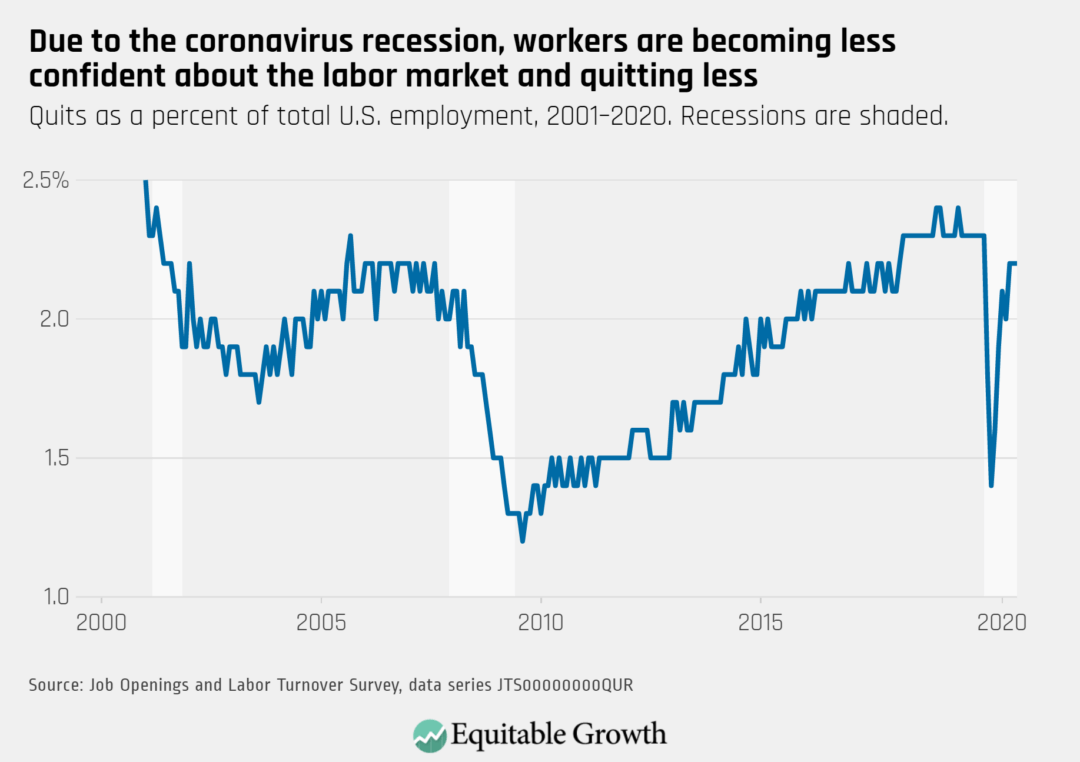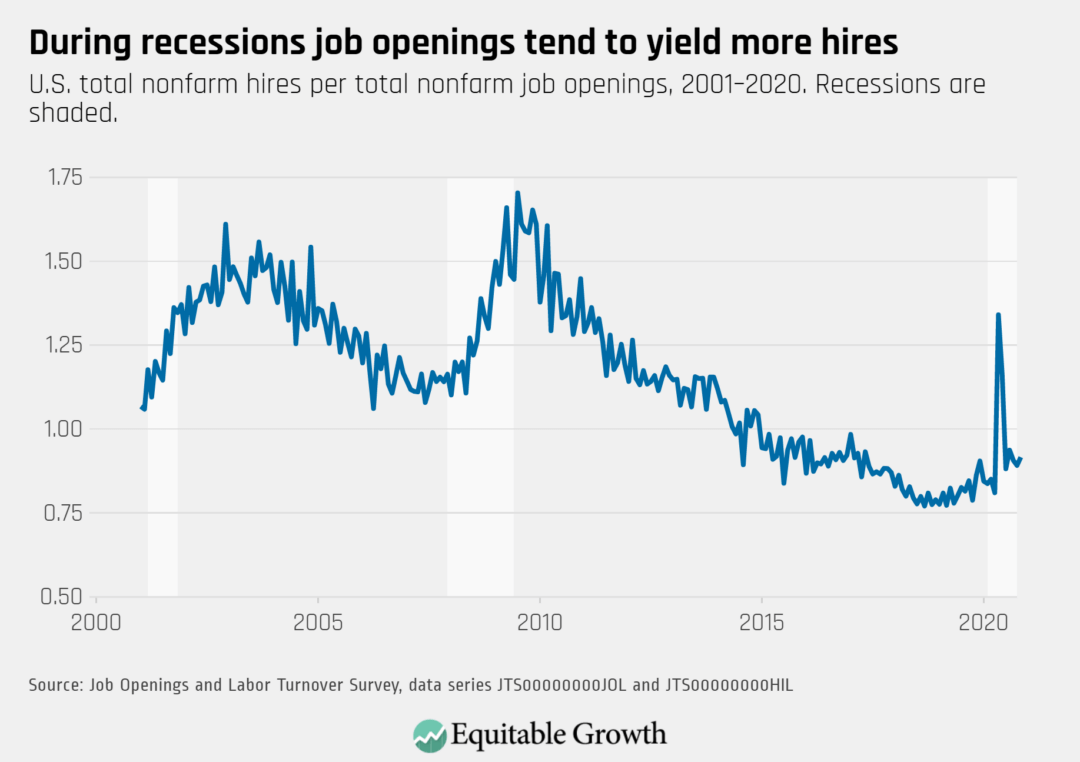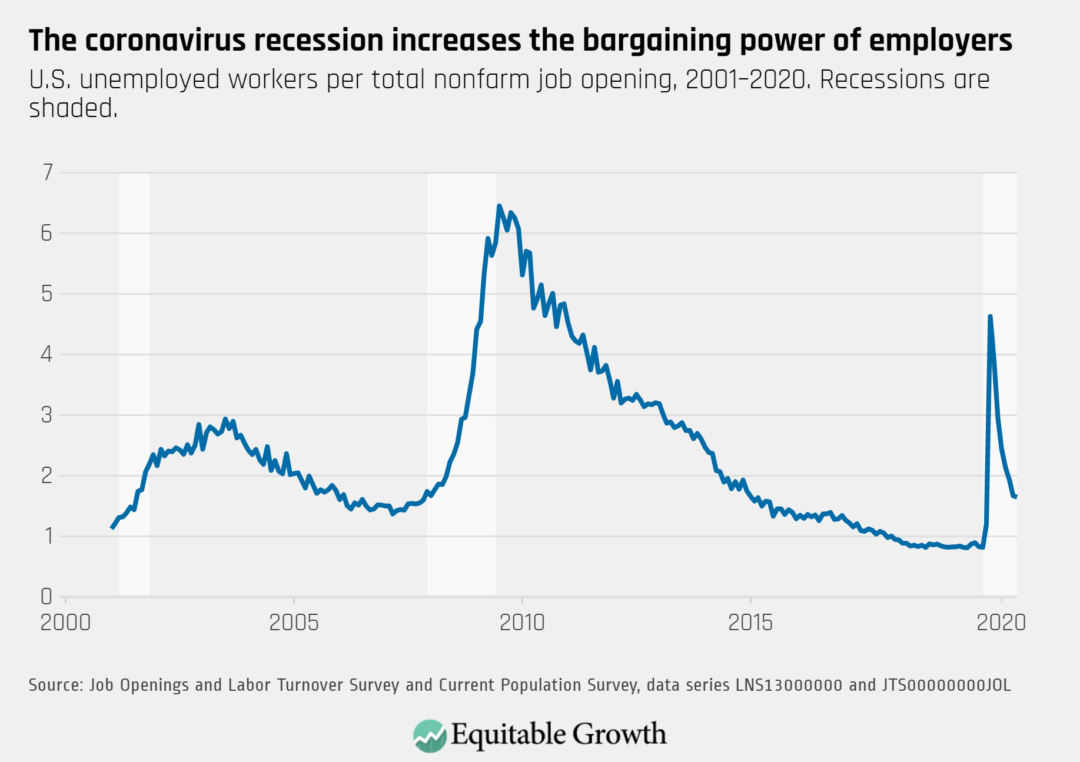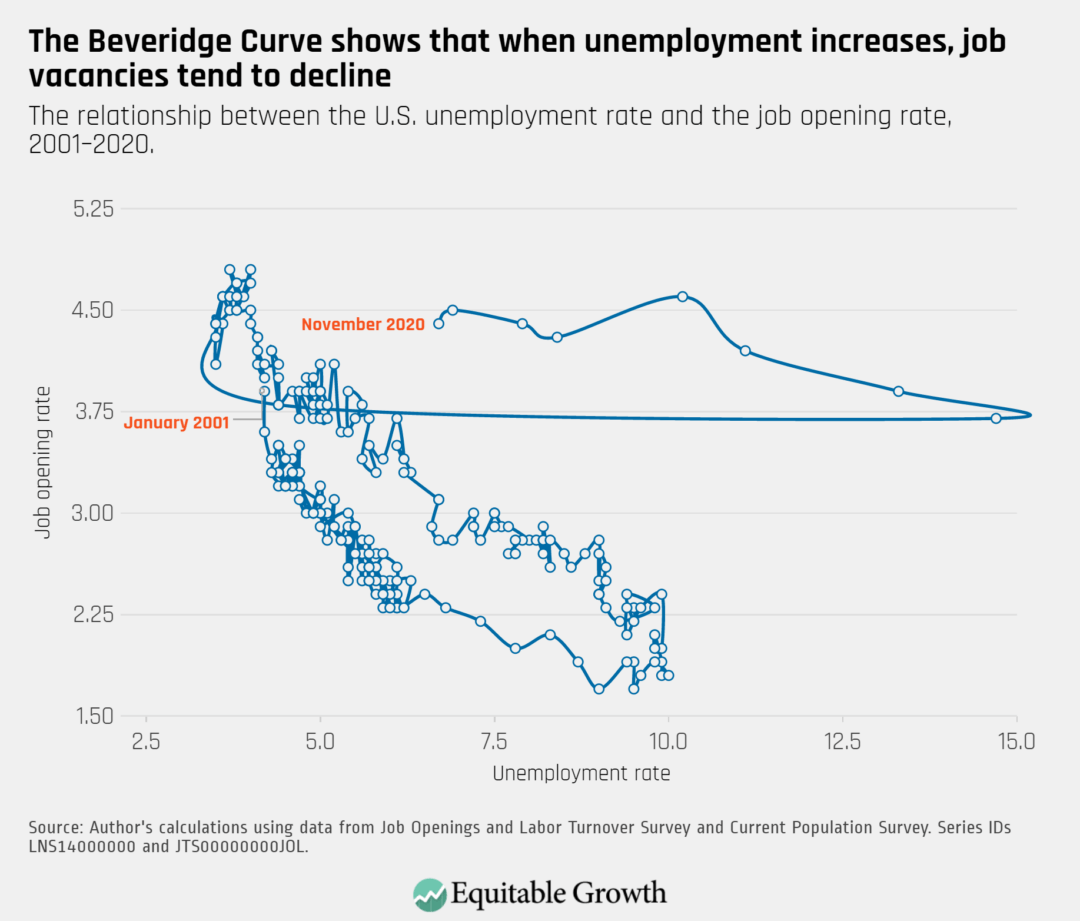JOLTS Day Graphs: November 2020 Edition
The quits rate has remained at 2.2 percent since September, but in November, it increased to 5.0 percent in accommodation and food services, where pay has declined and jobs are risky due to the pandemic.

The vacancy yield was little changed in November as the hires rate stayed the same and the job openings rate declined slightly.

As the unemployment rate declined in November, the ratio of unemployed workers per job opening declined slightly to 1.64.

The Beveridge Curve moved little in November as the unemployment rate declined by 0.2 percentage points and the job openings rate declined by 0.1 percentage points.


